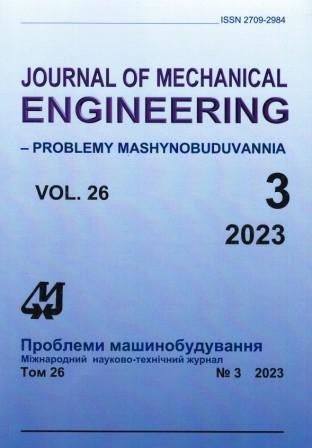Integrated Studies of Electrophysical Processes in Steam Turbines
Abstract
The paper deals with comprehensive research in the field of electrization of wet steam flow in a turbine. The experience of the conducted studies on laboratory stands and full-scale objects (CHP and TPP) in Ukraine and the USA is introduced and generalized. It was shown that in the process of steam electrization, the charge density in the flow can reach very high values (an order of magnitude appears to be higher than in a thundercloud), and this phenomenon mainly has a negative effect on the turbine operation. Statistical data on the charge formation of the steam flow in the low-pressure cylinder of the turbine are presented. Results of the research to establish the main electrophysical factors of influence on the surface strength of the blade, such as electric fields, charge density and their polarity, are presented. The research results showed that such factors as the presence of a positively charged steam flow, constant and variable electric fields, which were most often recorded at operating turbines of CHPs and TPPs, significantly (by two or more times) intensify erosion-corrosion processes on the metal surfaces of the blades, thus reducing their working resource. Thermodynamic processes are studied both under conditions of natural electrification of a high-speed flow, which reduce the efficiency by about 0.3–0.35%, and under the influence of artificially created electric charges, which make it possible to increase the efficiency of the steam expansion process in the turbine by 2 or more percent. Various options of local input of electrical energy for steam ionization in the turbine are considered. At the same time, it is noted that for the practical implementation of these approaches, further careful design improvements and tests on model and full-scale installations are required. Water chemistry regimes are also considered in the context of their influence on the flow charge formation process, as well as on reliability and efficiency indicators of the turbine. Experimentally at an 800 MW turbine plant in the USA, it was shown that a change in the pH of the medium affects the intensity and polarity of the charge formation of the steam flow. The paper introduces the physical features of this phenomenon and notes the importance of these processes influence on the strength characteristics of the blades. Information on new methods and technologies that could lead to an increase in the operational efficiency and reliability of wet steam turbines, such as methods for input and removal of electrical energy into the flow; rational choice of water chemistry regimes; space charge neutralization, etc., is provided. These comprehensive electrophysical studies, considered in conjunction with thermal processes, can be characterized as a new scientific direction in the theory of steam turbines – thermal electrophysics.
Downloads
Published
Issue
Section
License
Copyright (c) 2023 А. О. Тарелін, O. Weres

This work is licensed under a Creative Commons Attribution-NoDerivatives 4.0 International License.
All authors agree with the following conditions:
- The authors reserve the right to claim authorship of their work and transfer to the journal the right of first publication of the work under the license agreement (the agreement).
- Authors have a right to conclude independently additional agreement on non-exclusive spreading the work in the form in which it was published by the jpurnal (for example, to place the work in institution repository or to publish as a part of a monograph), providing a link to the first publication of the work in this journal.
- Journal policy allows authors to place the manuscript in the Internet (for example, in the institution repository or on a personal web sites) both before its submission to the editorial board and during its editorial processing, as this ensures the productive scientific discussion and impact positively on the efficiency and dynamics of citation of published work (see The Effect of Open Access).

